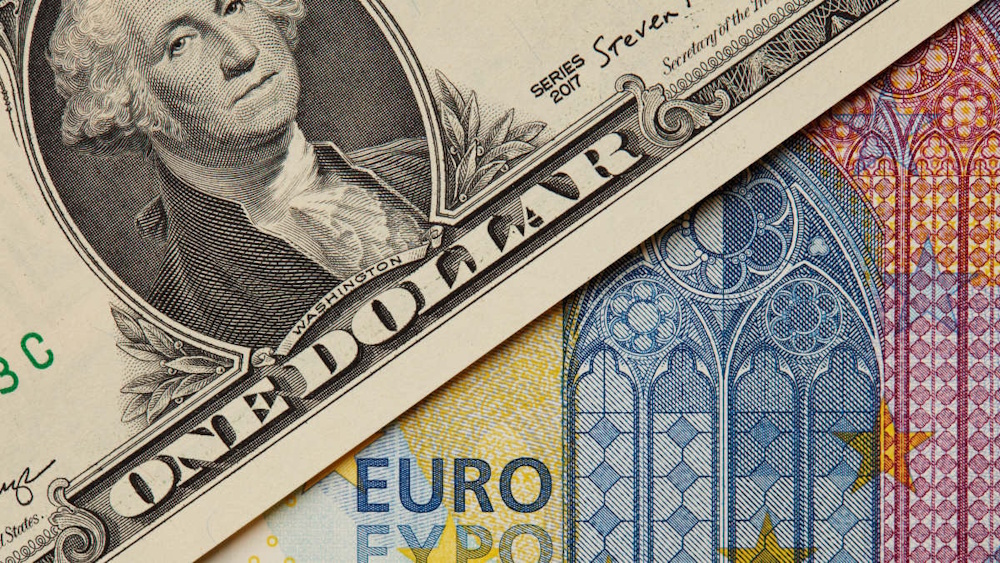The EUR/USD pair was observed trading at approximately 1.1574 on Wednesday, reflecting a decline of 0.11% intraday as market participants assessed the impact of disappointing U.S. employment data in light of increasing anticipations for a Federal Reserve rate cut in December. Despite intraday losses, EUR/USD is currently up 0.63% week-on-week, showing strength near the upper limit of its recent trading range of 1.1500–1.1600. This balance highlights a clash between opposing fundamentals — a weakening U.S. economy leading to dollar depreciation, and a Eurozone that remains challenged by stagnation and low inflation. The changes in the dollar rose after the ADP private payroll report showed continued job losses averaging 11,000 per week in October, raising worries about employment stability. Futures data indicates that investors are currently estimating a 63% chance of a 25-basis-point Fed cut during the December meeting. However, the lack of official Non-Farm Payrolls data, paused because of the 43-day U.S. government shutdown, has led to markets functioning without clear insight. The lack of data has increased sensitivity to secondary releases, amplifying USD volatility within the range of 1.1550–1.1610. New York Fed President John Williams has indicated a potential increase in the balance sheet, while the Federal Reserve has affirmed that quantitative tightening is nearing its end. Consequently, traders are modifying their assessment of dollar risk pricing. Treasury yields have fallen, with the 2-year note now at 3.92%, reaching its lowest level in 18 months — presenting a structural challenge for the greenback.
The largest economy in the Eurozone continues to lag behind expectations. In October, Germany’s harmonized CPI saw a slight rise of 0.3% month-on-month, leading to an annual inflation rate of 2.3%, the lowest level recorded since early 2022. Stable prices reduce the pressure on the European Central Bank to pursue additional tightening measures; nonetheless, they also suggest a drop in consumer demand. The German ZEW investor confidence index has dropped from 39.3 to 38.5, reflecting a waning sense of optimism about a near-term recovery. Analysts at Danske Bank described the report as “a reminder that Europe’s growth engine remains in neutral,” emphasizing that energy-sensitive industries continue to weigh on manufacturing sentiment. The latest data has lessened the enthusiasm for buying euros, even with a surge in global stocks fueled by positive sentiment about U.S. fiscal measures. The market response indicates that the strength of EUR/USD is mainly driven by the dollar’s weakness instead of a renewed confidence in European fundamentals. From a technical perspective, EUR/USD is presently restricted by two essential boundaries. Immediate support is located at 1.1520–1.1530, a level that successfully stopped declines on two occasions in late October. On the other hand, resistance is noted at 1.1600–1.1686, where sellers have repeatedly returned since mid-September. The Relative Strength Index is currently around 48, indicating a neutral momentum state. The MACD lines are presently flattening, ready for a possible breakout signal. On the 4-hour chart, a potential falling wedge formation indicates an impending rise in volatility.
If bulls manage to close above 1.1668, it opens the door for a possible retest of 1.1748, aligning with the 76.4% Fibonacci retracement of the decline seen from 2021 to 2022. If support at 1.1500 is not upheld, we may see a rapid drop to 1.1460, and potentially down to 1.1400, marking the next psychological threshold. Investor sentiment has varied due to the upcoming shutdown vote, which is expected to pass this week, resulting in the reopening of key government agencies. The gathering of data, especially the delayed September jobs report, could result in considerable adjustments within the dollar complex. Meanwhile, U.S. equity indices are displaying a divergence — the Dow Jones has surged past 48,000, while the Nasdaq Composite has slipped 0.5%, indicating a rotation from tech to defensive sectors. This divergence has typically placed strain on the USD as traders realign their portfolios towards euro assets. The euro’s year-to-date rise of about 9% suggests a macroeconomic adjustment instead of showcasing intrinsic strength. Central banks, particularly the ECB, are proceeding with caution, as President Christine Lagarde has indicated that rate cuts are “not on the near-term agenda,” leading to varying real yield differentials. Attention is now turned to the remarks from the Federal Open Market Committee. A cautious approach from figures such as Williams or Bostic could result in additional weakening of the dollar, possibly pushing EUR/USD closer to 1.1700. However, if Fed speakers reaffirm their commitment to data dependency, or if the delayed NFPs suggest stronger-than-expected payroll growth, the pair might see a notable reversal toward 1.1520. In this scenario, the USD Index may recover above 103, exerting downward pressure on the euro, potentially pushing it back into the lower 1.15 range.
Medium-Term Outlook: Stuck in a Range but Leaning Towards Optimism From a medium-term perspective, the currency pair is currently showing a balanced to positive trend. The structural backdrop suggests that with a slowdown in U.S. growth, stabilizing inflation in Europe, and expected monetary easing in both economies by Q1 2026, we should anticipate prolonged range trading between 1.1500 and 1.1700 until the end of the year. Nonetheless, momentum indicators indicate a slight tendency towards the upside. If the shutdown resolution and soft jobs data result in a further drop in Treasury yields, we could witness EUR/USD surpass the 1.1700 mark, targeting 1.1780, and then 1.1900, where significant multi-month resistance is found. Considering the current conditions — fundamental divergence indicating euro stability, a dovish shift from the Fed, and a technical structure nearing breakout — EUR/USD warrants a Buy rating for traders anticipating a move towards 1.17–1.18 in the next 2–3 weeks. Short-term pullbacks into 1.1520–1.1540 offer chances for accumulation, depending on the softness of U.S. data and the ECB’s ongoing non-intervention approach. The euro’s path is closely tied to the fiscal clarity coming from Washington and the Federal Reserve’s willingness to relax monetary conditions. The technical map shows a positive outlook; however, the forthcoming U.S. labor report will be key in determining whether EUR/USD remains in its current range or starts a new upward movement.

